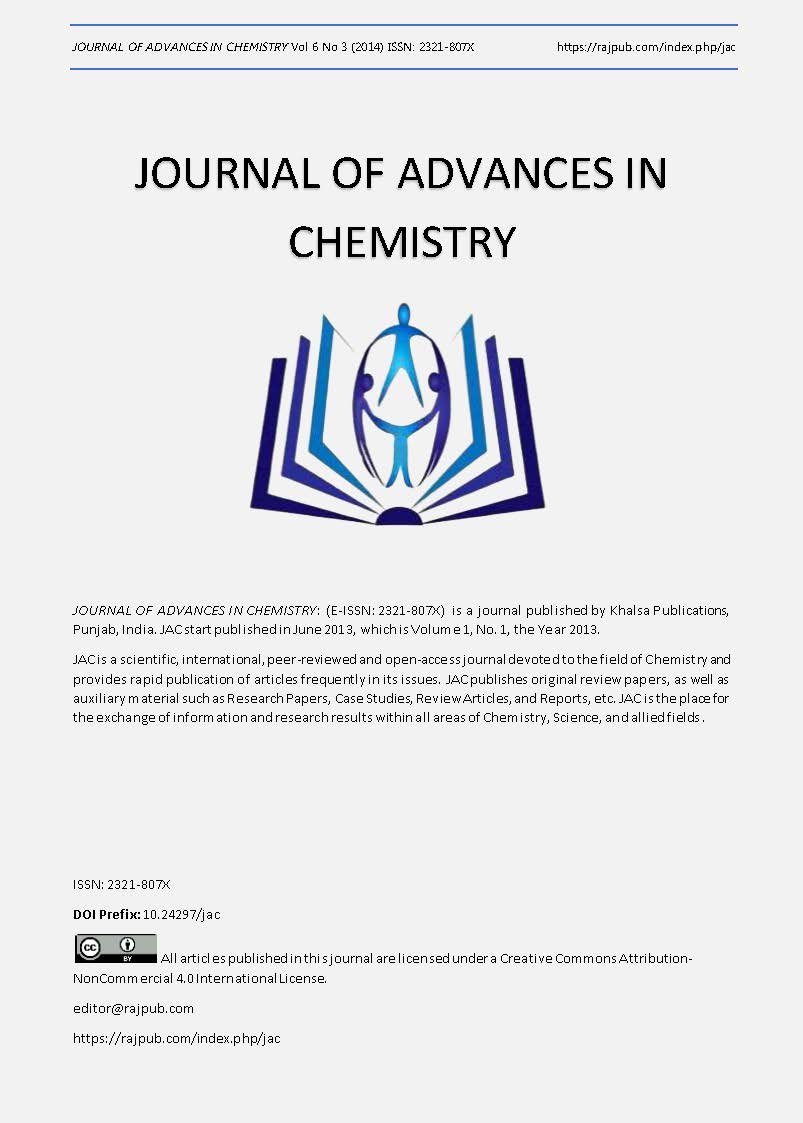Nanocrystalline Hydroxyapatite Ceramics Prepared by Hydrolysis in Polyol Medium, Microstructure and Mechanical Properties after Spark Plasma Sintering
DOI:
https://doi.org/10.24297/jac.v6i3.6594Keywords:
Chemical synthesis, Bioceramics, Nanoparticles, Spark Plasma SinteringAbstract
This Letter describes a new approach for the synthesis of hydroxyapatite (HA) nanoparticles by polyol process has been successfully conducted by spark plasma sintering process, resulting in a dense hydroxyapatite compacts. Besides, the sintering behaviour of hydroxyapatite powders at different temperatures ranging from 800°C to 950°C at 50 MPa was studied. The microstructure, Vickers microhardness, fracture toughness and density are described. The suitable sintering condition under the pressure of 50 MPa is 900°C for 5 min. A maximum value of the density was reached at around 900°C, and then decreased with further increase in the temperature due to the decomposition of hydroxyapatite into β-tricalcium phosphates.
Downloads
References
[2] Hench, L.L. 1998. Bioceramics. J. Amer. Ceram. Soc. 81, 1705.
[3] Hench, L. L. 2000. The challenge of orthopaedic materials. Current Orthopaedics 14, 7-15.
[4] Martz, E.O., Goel, V.K., Pope, M.H., Park, J.B. 1997. Materials and design of spinal implants. J. Biome. Mater. Res. 38, 267.
[5] Jézéquel, D., Guenot, J., Jouini, N., Fiévet, F. 1995. Submicrometer zinc oxide particles: Elaboration in polyol medium and morphological characteristics. J. Mater. Res. 10, 77-83.
[6] Poul, L., Ammar, S., Jouini, N., Fievet, F., Villain, F. 2003. Synthesis of inorganic compounds (metal, oxide and hydroxide) in polyol medium : A versatile route related to the sol-gel process. J. Sol-Gel Sci. Tech. 26, 261.
[7] Lee, S., Jeong, S., Kim, D., Hwang, S., Jeon, M., Moon, J. 2008. ZnO nanoparticles with controlled shapes and sizes prepared using a simple polyol synthesis. Superlattices and Microstructures. 43, 330.
[8] Mechay, A., Elfeki, H., Schoenstein, F., Jouini, N. 2012. Nanocrystalline hydroxyapatite ceramics prepared by hydrolysis in polyol medium. Chemi. Phys. Lett. 541, 75.
[9] Sang, Y., Groza, J.R., Sudarshan, T.S., Yamazaki, K. 1996. Diffusion donding of boron nitride on metal substrates by plasma activated sintering (PAS) process. Scripta Materialia, 34, 1383-86.
[10] Groza, J.R. 1994. Consolidation of atomized NiAl powders by plasma activated sintering process. Scripta. Metallurgica et Materialia. 30, 47.
[11] Gu, Y.W., Loha, N.H., Khora, K.A., Tora, S.B., Cheangb, P. 2002. Spark plasma sintering of hydroxyapatite powders. Biomaterials, 23, 37.
[12] Rodriguez-Carvajal, J. 1993. Recent advances in magnetic structure determination by neutron powder diffraction. Physica B: Condensed. Matter. 192, 55.
[13] Rietveld, H.M. 1969. A profile refinement method for nuclear and magnetic structures. J. Applied Crystallography, 2,65-71.
[14] Champion, E., Gautier, S., Bernache-Assollant, D. 1996.Characterization of hot pressed Al2O3-platelet reinforced hydroxyapatite composites. J. Mater. Sci. : Mater. in Medic.7, 125-130.
[15] Bose, S., Dasgupta, S., Tarafder, S., Bandyopadhyay, A. 2010. Microwave-processed nanocrystalline hydroxyapatite: Simultaneous enhancement of mechanical and biological properties. Acta Biomaterialia, 6, 3782-3790.
[16] Nishikawa, H. 2001. Thermal behavior of hydroxyapatite in structural and spectrophotometric characteristics. Mater.Lett. 50, 364-370.
[17] Jarcho, M., Bolen, C.H., Thomas, M.B., Bobick, J., Kay, J.F., Doremus, R.H. 1976. Hydroxyapatite synthesis and characterization in dense polycrystalline form. J. Mater. Sci. 11, 2027-35.
[18] Steil, M.C., Fouletier, J., Kleitz, M., Labrune, P. 1999. BICOVOX : Sintering and grain size dependence of the electrical properties. J. Europ. Ceram. Soc. 19, 815.
[19] Wang, P.E., Chaki, T.K. 1993. Sintering behaviour and mechanical properties of hydroxyapatite and dicalcium
phosphate. J. Mater. Sc.: Mater. in Medic. 4, 150-58.
[20] Li, T., Li, Q., Fuh, J.Y.H., Yu, P.C., Lu, L., Wu, C.C. 2007. Effects of AGG on fracture toughness of tungsten carbide. Mater. Sci. and Engine. A . 587, 445-446.
[21] Coronel, L., Jernot, J.P., Osterstock, F. 1990. Microstructure and mechanical properties of sintered glass. J. Mater. Sci. 25, 4866–72.
Published
How to Cite
Issue
Section
License
 All articles published in Journal of Advances in Linguistics are licensed under a Creative Commons Attribution 4.0 International License.
All articles published in Journal of Advances in Linguistics are licensed under a Creative Commons Attribution 4.0 International License.




